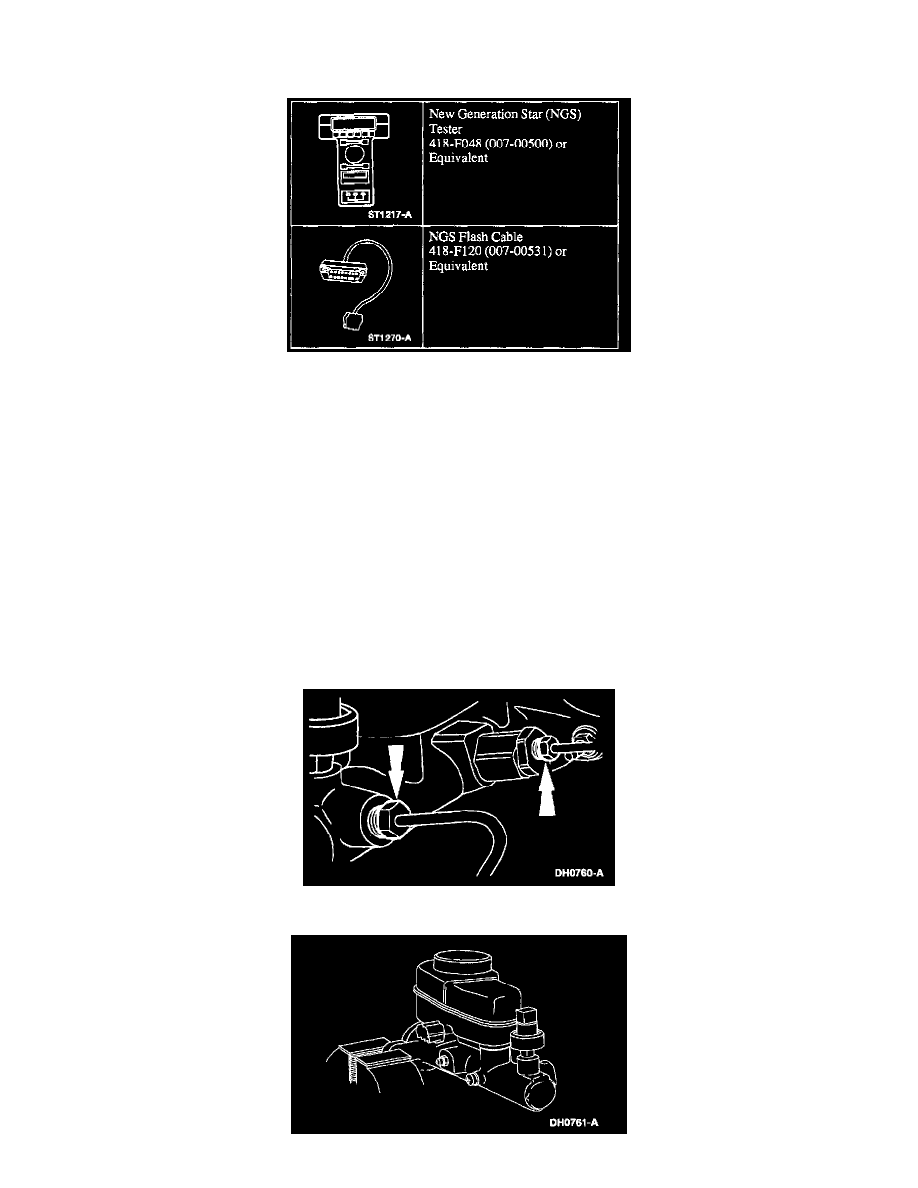Ranger 4WD V6-3.0L VIN V Flex Fuel (1999)

Brake Bleeding: Service and Repair
Master Cylinder Bleeding
Bleeding Components
WARNING: Brake fluid contains polyglycol ethers and polyglycols. Avoid contact with eyes. Wash hands thoroughly after handling. If
brake fluid contacts eyes, flush eyes with running water for 15 minutes. Get medical attention if irritation persists. If taken internally, drink
water and induce vomiting. Get medical attention immediately.
CAUTION: Do not allow the brake master cylinder reservoir to run dry during the bleeding operation. Keep the brake master cylinder
reservoir filled with the specified brake fluid. Never reuse the brake fluid that has been drained from the hydraulic system.
CAUTION: Brake fluid is harmful to painted and plastic surfaces. If brake fluid is spilled onto a painted or plastic surface, immediately
wash it with water.
NOTE: When any part of the hydraulic system has been disconnected for repair or installation, air can get into the system and cause spongy brake
pedal action. This requires bleeding of the hydraulic system after it has been correctly connected. The hydraulic system can be bled manually or with
pressure bleeding equipment.
NOTE: When the brake master cylinder has been installed new or the system has been emptied or partially emptied, it must be primed to prevent air
from entering the system.
1. For in-vehicle priming, disconnect the brake lines from the brake master cylinder.
